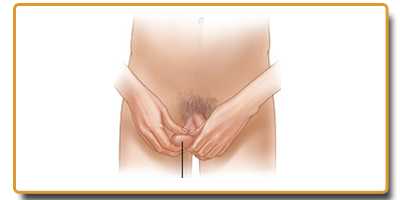 Testicular cancer usually presents in young to middle aged men . Usually picked as an abnormal feeling testis or a lump in the testis, these cancer may occasionally be found as incidental tumours found on scans.The commonest cancer is called seminoma. On the other hand there are group of less common cancers grouped together called Non-Seminomatous Germ Cell Tumours. Whatever be the variety, the first step is to remove the whole testis. Extremely rarely, in patients with single testis, a more conservative surgery is undertaken. Being young, most of these men may also choose to preserve the semen for future fertility use (cryopreservation).
Testicular cancer usually presents in young to middle aged men . Usually picked as an abnormal feeling testis or a lump in the testis, these cancer may occasionally be found as incidental tumours found on scans.The commonest cancer is called seminoma. On the other hand there are group of less common cancers grouped together called Non-Seminomatous Germ Cell Tumours. Whatever be the variety, the first step is to remove the whole testis. Extremely rarely, in patients with single testis, a more conservative surgery is undertaken. Being young, most of these men may also choose to preserve the semen for future fertility use (cryopreservation).
Done as a day case operation , radical orchidectomy (testis removing operation) is reasonably quick and simple. Once recovered and the histology obtained , these patients need further staging scans (either before or after the operation) , to plan further treatment. The further treatment usually depends upon various factors (nature of the cancer, grade , stage, extent and risk factors). This further management could be observation, single dose chemotherapy, a course of chemotherapy or a radical surgery to remove lymphnodes in the abdomen (retroperitoneal lymphnode dissection).
Your treating surgeon will discuss these issues with you and may send your to see an medical oncologist to discuss.In long term , follow up is required for 5-10 years atleast with periodic scans , blood tests and Xrays.
